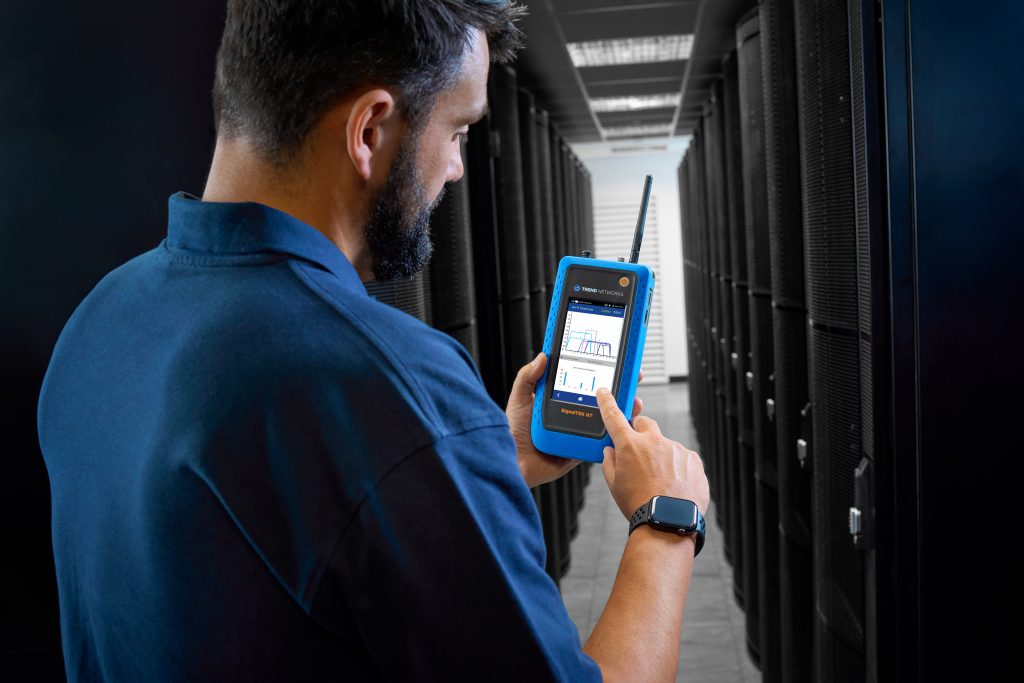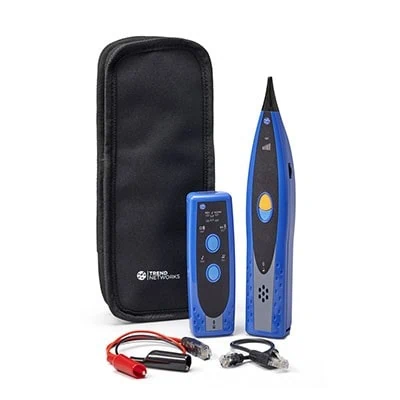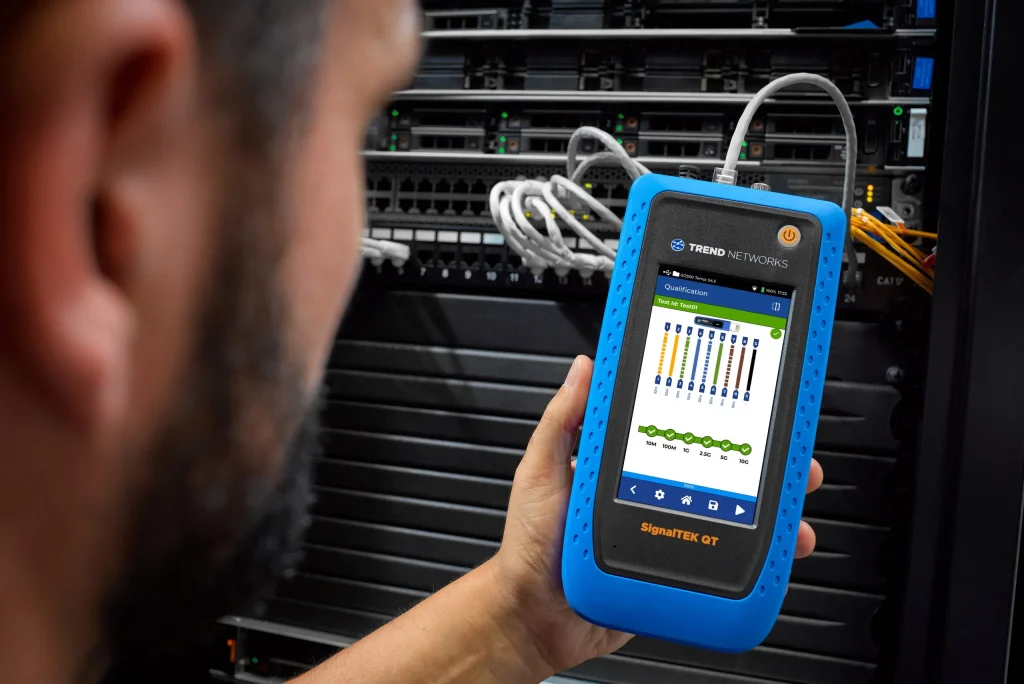Cabling for Wi-Fi: Best Practices
An infrastructure design consideration that arguably frustrates users, and creates a never-ending headache for network administrators, is the quality of Wi-Fi service in a building. Typically, a poor user experience is one where users have either no signal on their wireless device or see “full bars” but cannot connect to the network.
In an office environment poor Wi-Fi performance is undoubtedly an annoyance, but in a hospital, it could prevent medical staff from delivering care in a timely manner. Waiting for a mobile terminal to retrieve the medical history of a seriously ill patient can literally be a matter of life and death.
Proper cabling is the foundation of Wi-Fi performance
Configuring a wireless access point system (AP) is a complex project and is not the subject of this post, although Aps or AP systems of course plays an important role in Wi-Fi network best practice. To provide network integrators with the best chances of success, the cabling infrastructure must be available to support optimal installation and placement of AP.
Annex A.3 of the ISO/IEC 11801-6 standard provides guidelines to network cabling designers that should be considered when placing cabling to support Wi-Fi and other wireless applications. Primarily based on the frequency band of and data rate of Wi-Fi services, the standard lists typical indoor ranges (radius of an AP) that should be used to determine the coverage of an average grid. The grid is then used to determine the placement of service outlets (SO).
Additionally, the category of installed cabling must be considered to provide sufficient bandwidth for current and future applications. Both ISO/IEC and ANSI/TIA standards recommend that two (2) category 6A cables be installed to each SO that will support an AP. Each category 6A cable will provide Class Ea cabling channels that support 10 Gb/s of data bandwidth to 100 meters, for a total of 20 Gb/s to each AP. It is expected that Wave 2 802.11ac APs will require 20 Gb/s of backhaul bandwidth for maximum Wi-Fi client support.
For distances of 30-50 meters, designers might also consider category 8 cabling. Each cat 8 cable will support Class II channels to 30 meters, providing 40 Gb/s of bandwidth. Work on standards is also being done to develop support for 25 Gb/s at 50 meters on Class II and Class Fa (category 7A cable) channels.
Service area considerations
Using the supported wireless applications table in Annex A.3 of ISO/IEC 11801-6, the typical indoor radius of an 802.11ac 5 GHZ AP is 12 meters. Building construction and materials greatly affect signal penetration and must be considered, though for this example 12m will be used.
The geometry used to describe the grid placement of APs in a uniform open space is actually a “honeycomb” pattern using hexagonal shaped cells. Because radio waves propagate evenly in all directions (with typically installed antennae) a square grid is not an accurate modelling tool, though it can be used for convenience. Circular cells are difficult to work with on building floor-plans. Therefore, hexagonal shaped cells and a honeycomb grid are ordinarily used for planning purposes.
The ceiling height of the service area must also be considered when designing the cabling for APs. Heights greater than 9 meters that may be present in public spaces like convention halls, airports, places of worship and sports venues require special consideration. Service loops may be required at the SO end of the cabling to allow the AP to be mounted on a fixture that extends down from the ceiling. The overall length of the permanently installed portion of the cable should not exceed 90 meters when complying with the ISO/IEC 11801-1 standard and shall not exceed 90 meters when complying with ANSI/TIA 568-C.2 standard. The difference is that cabling field tests to ISO/IEC standards do not automatically fail if the length exceeds 90 meters as long as all other parameters pass. However, ANSI/TIA standards require the overall test to fail if the horizontal cable link exceeds 90 meters, regardless of the status of other test parameters.
A 10-meter drop-mount for an AP in an exhibition hall must be deducted from the horizontal distance of the cable serving that SO. The resulting horizontal distance the SO can be from the equipment rack in the telecommunications room can now be no more than 80 meters.
Proper grid sizing for AP placement
Now that the some of the background information is understood, the basic rules for planning the cabling installation in a service area can be discussed.
The plan for an office space of uniform construction with 2.4 to 3-meter (8-10 ft) ceilings, requires only the X and Y dimensions of the space. Let’s assume a space size of 100 x 75 meters, using a hexagonal cell with a radius of 12 meters.
- The radius of the cell served by each AP is 12 meters = a cell diameter of 24 meters.
- 100-meter span of wall X / 24-meter cell diameter = 2.5 cells for span X. Round up to 3.
- 75-meter span of wall Y / 24-meter cell diameter = 3.1 cells for span Y. Round down to 3.
- Nine (9) cabling cells are required for this 7,500 m2 space.
- Each cell should be supplied with two (2) category Ea/6A or better cables.
- A total of 18 cabling links are required to serve this office space allowing for future capacity.
- The longest span of this space is 100 meters. Since a horizontal cable should not/cannot exceed 90 meters, a telecommunications space or service cabinet is required inside the perimeter of the space.
Proper planning provides the best outcomes
Whether refitting an existing building with new cabling or beginning with new construction, a well-planned and installed cabling system to support Wi-Fi services gives integrators the best opportunity to install equipment to provide the best user experience.
The cabling and number of APs required in the above example may seem excessive and expensive. The key point to remember is that it may not be necessary to install an AP in each of the cells for this service area. Perhaps only five would be needed instead of nine as the plan allows for. But, by having a grid of dedicated cabling, network integrators have the ability to position APs in locations that need additional coverage. This design philosophy allows the flexibility for spaces to be reconfigured without having to re-cable for a new layout. Network Managers can easily locate an AP near a conference room that routinely hosts many users to reduce the load on nearby APs.
Planning beyond Wi-Fi
5G mobile broadband deployment is on the horizon and cabling designers should consider its requirements as well. In addition to public communications, 5G is also expected to be utilized by police, fire and other emergency service personnel for communications and geo positioning. Local regulation may require complete coverage inside buildings to ensure emergency services can operate safely.
Standards exist for distributed antenna systems (DAS), which is cabling to support antennae installed in buildings for wireless systems other than Wi-Fi. Designers should check whether local regulations require DAS coverage and familiarize themselves with the standards that provide guidance on the subject.






